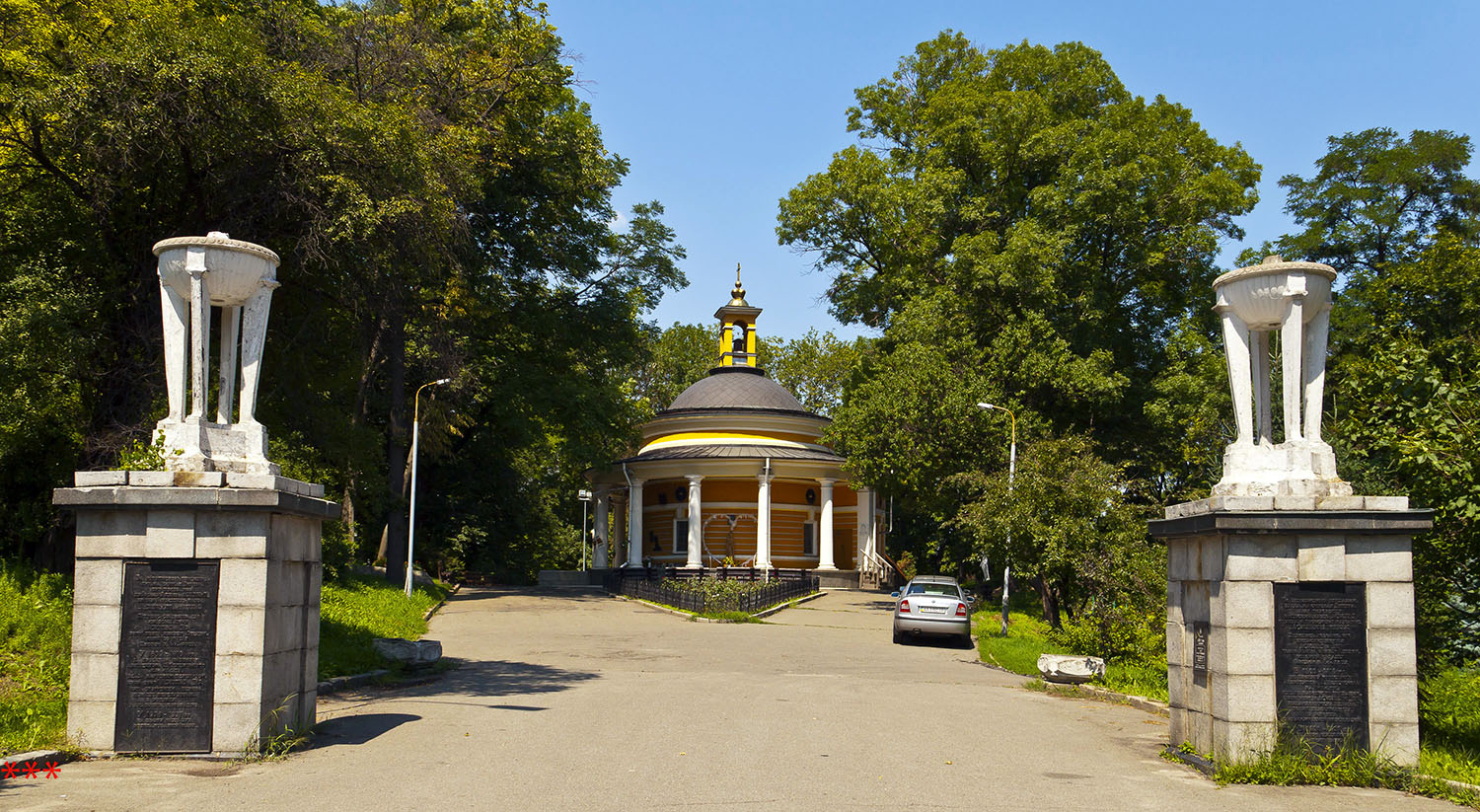The Church of St. Nicholas at Askoldova Mogila is a Kiev Greek Catholic church located in Askoldova Mogila Park. In 1809, the Voronezh merchant Samuil Meshcheryakov wished to perpetuate the memory of his wife, who died in Kyiv and was buried at Askold’s grave. For this purpose, he ordered Andrei Melensky (known in Kiev for his works such as Contract House, a monument Magdeburg Law, Church of the Nativity, Church of the Exaltation of the Cross) project of a stone church, which was built in that same year and consecrated on September 1, 1810. The church was two-story, made in the Empire style and took the form of a rotunda, surrounded by a colonnade of the Tuscan order. It was crowned with a large hemispherical dome with a lantern and a small bell tower. Taras Shevchenko depicted her in one of his watercolors. Inside the church, in the semi-basement crypt, 77 burial places were provided. In 1816, the church was painted by the icon painter Biletsky, and in 1840 the crypt was closed.
In 1847, the church along with the cemetery was planned to be demolished, since the path to the Chain Bridge was being laid nearby, and in addition, it was in disrepair as a result of landslides on the slope. However, in September of the same year, the temple on Askold’s grave was visited by Emperor Nicholas I, who prohibited the demolition, declaring: “There is no threat of collapse, we need to fix it a little and the church should exist.” A plaque with this historical phrase was subsequently hung in the renovated temple. Another plaque, with a long (and half-fictional) history of Askold’s grave, was subsequently hung on the facade of the church in 1866, during the celebration of the 1000th anniversary of Askold’s baptism. At the same time, a legend spread that his burial place was also located here.
In 1861, at the expense of the monastery, the cemetery was restored and surrounded by a stone fence with a gate, above which a bell tower was built. A stone priest’s house was also built. In the cemetery, closed for public use since 1845, starting from the second half of the 19th century, burials of the most eminent residents of Kyiv began. Realizing that considerable benefits could be gained from this, the monastery authorities began to practice a wide sale of places on it, and in the early 1880s they even introduced the position of caretaker.
In 1882, the Church of St. Nicholas was restored according to the design of Vladimir Nikolaev (known in Kiev for his works such as monument to Bogdan Khmelnitsky, National Philharmonic, Liberman’s mansion, the mansion of Fyodor Tereshchenko – a museum of Russian art, since 2017 it has been called Kiev Art Gallery).
After the establishment of the Soviet regime, the church was closed, but in 1921-1934 it still operated as a parish UAOC. In 1934, the church was closed completely, and the cemetery was destroyed in order to develop a park. In 1936, the church was rebuilt into a restaurant, and in 1938, the architect Pyotr Yurchenko quite cleverly converted the former church into a park pavilion, adding a through colonnade of the Ionic order instead of a bathhouse. At the same time, the bell tower from the early 20th century, the rector’s house and the fence from the 1860s were also demolished.
The latest restoration in 1998 restored the original appearance of the structure. On April 26, 1992, the temple was transferred to the Ukrainian Greek Catholic Church. In the semi-basement there is currently also a church in the name of St. Sylvester the Pope. The consecration of the restored St. Nicholas Church was carried out on May 22, 1998 by the then Right Reverend Exarch of the Kiev-Vishgorod UGCC Lyubomir Guzar. The Church of St. Nicholas on Askold’s Grave is the first temple visited by Pope John Paul II during his apostolic visit to Ukraine in the summer of 2001.
Where is the Church of St. Nicholas located?
Park Road, 1
